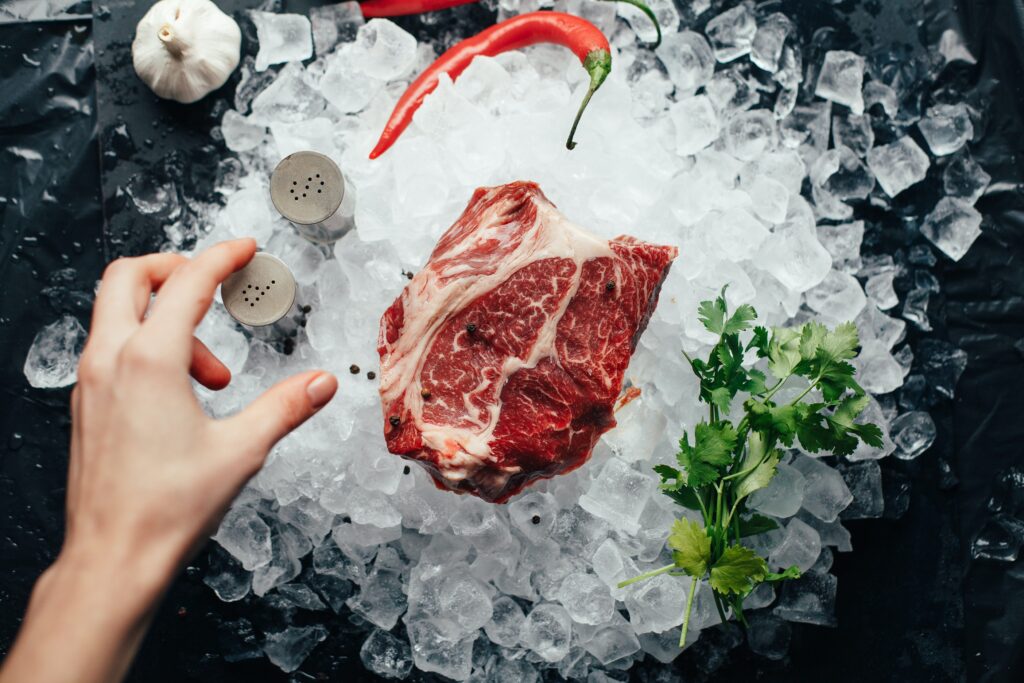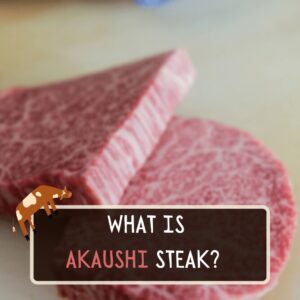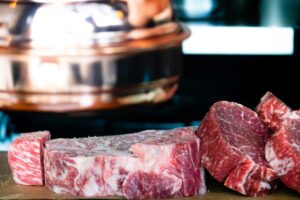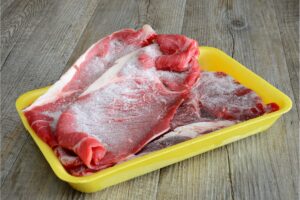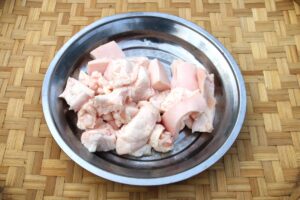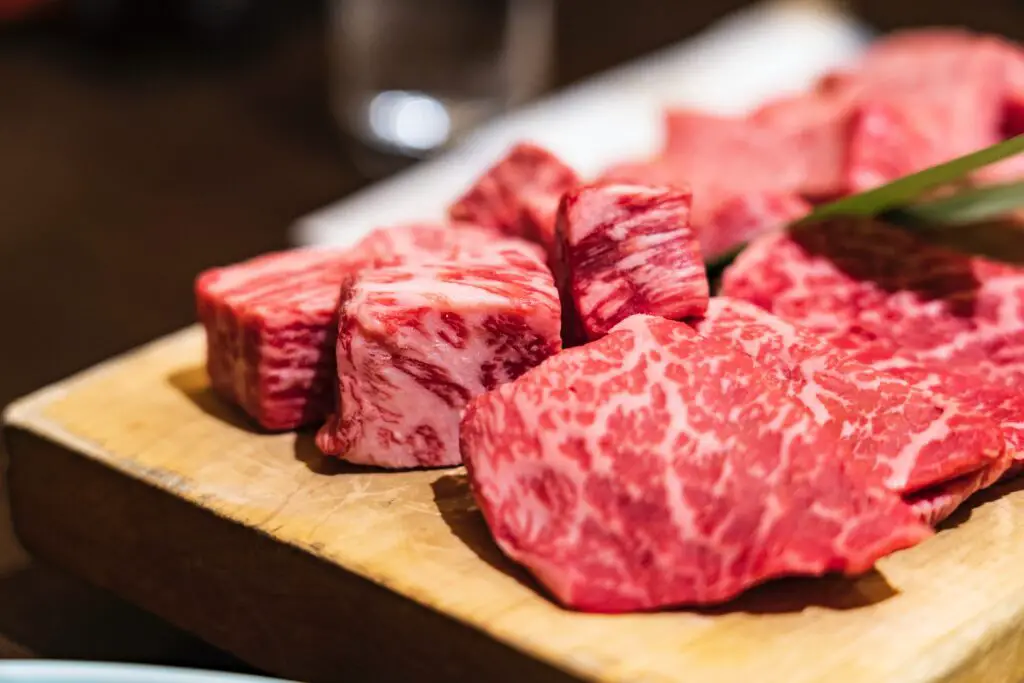Wagyu beef can easily put your regular dry-aged steak to shame. Nothing matches its unique, luxurious texture and richness. Technically speaking, Wagyu can be cooked just like any other beef. But surely, you didn’t pay that 3-digit price tag to end up eating something usual. In this article, I’ll show you the best tips on how to cook Wagyu Beef. Don’t worry, you don’t have to own a samurai sword and wear a kimono to cook Wagyu in an authentic way. All you need is a bit of time and care. Let’s get started!
Editors note: As an Amazon Associate I earn from qualifying purchases.
What You’ll Need
Unlike most of the other beef, Wagyu has a unique inherent flavor. In fact, this might be one of the reasons why it costs so much. That said, you won’t need many ingredients. No sauces, marinades, or complicated seasonings.
- Wagyu beef slices
- Salt
- Ground pepper
- 1 tablespoon of sesame oil
- 2 peeled garlic cloves
How to cook wagyu beef Quick cheat-sheet
Proper storage
After purchasing your Wagyu meat, put it immediately into the freezer
Proper thawing
First, thaw the meat for around 12 hours (depending on size) in the freezer, below 5°C or 41°F
Second, remove from the fridge when thawed and 60 minutes before cooking
Seasoning Wagyu beef
Salt and pepper only, to taste. Do not rub, unless you want to remove some of the tenderness
Pre-heat skillet
Pre-heat your pan or skillet to medium-high heat. Best results can be achieved two ways:
– Using sesame oil
– Using a piece of fat cut from the meat itself
Searing the meat
Medium-rare, or medium. Nothing more, nothing less.
Use a meat thermometer if you are unsure (130 °F / 55 °C)
Let the meat rest on a plate
Depending on the thickness, 5 minutes at least, up to 10 at most.
Wrap it in foil or cover it to limit heat loss.
Step 1: Proper Storage
If you haven’t gotten your Wagyu yet, consider yourself lucky! You won’t indulge in the true taste of Wagyu unless it was stored properly.
If you’re ordering it online, make sure the seller sends it completely or partially frozen and packed in a vacuum-sealed bag. Once it arrives, you have to throw it immediately into your freezer.
I know that you probably want to keep staring at that marvelous masterpiece and daydream about how it would taste, but now is not the time. Letting your beef sit outside would increase the likelihood of freezer burns, which is the ultimate ruin for any type of beef.

Step 2: Thawing the Beef
Wagyu has one of the highest fat content of all the commercially-famous beef. For that reason, you’ll want to get it out of your freezer and put it into the fridge for about 12 hours before cooking it. This obviously depends on the size of the cut, so just make sure you give it enough time to completely defrost.
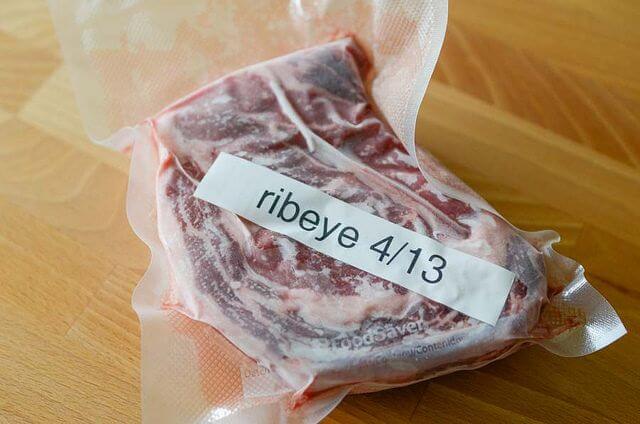
Then, get it ready on your counter 30 minutes to 1 hour before you start cooking. This will guarantee that your beef is cooked evenly from top to bottom. Fat insulates the heat when cooking, so if the inside is still fridge cold or frozen, then you won’t get the results you are looking for. Make sure it reaches an even room-ish temperature.
Step 3: Seasoning the Beef
Like I said earlier, Wagyu tastes stunning on its own. I like to limit my seasoning to pinches of salt and pepper over one side.
Some people like to work the beef with their fingers to push the salt deeper between the fibers. This will allow the salt to break down the Wagyu and make it feel a lot more firm.
However, I wouldn’t recommend that for folks trying Wagyu for the first time. I think your first encounter should be with its original texture. If you think it’s too tender, you can finely adjust it the next time based on your experience.
Step 4: Preheat Your Skillet
Get your skillet ready and set the temperature to medium-high. Then, pour 1 tablespoon of sesame oil alongside the sliced garlic cloves. I like that light mixture because it suits the rich fatty content of Wagyu. But you can always use butter, olive oil, or any other grease you like.
Some cooks like to sear the Wagyu inside the skillet without any oil. Under the right temperature, some of the beef’s fat will melt into the pan and act as a grease. As you can tell, this should give the richest and most dazzling taste since you’re cooking the meat in its own juices.
If you want to try this, then look for a large piece of fat on the rim of the meat. Cut it off, and use it when heating your skillet!
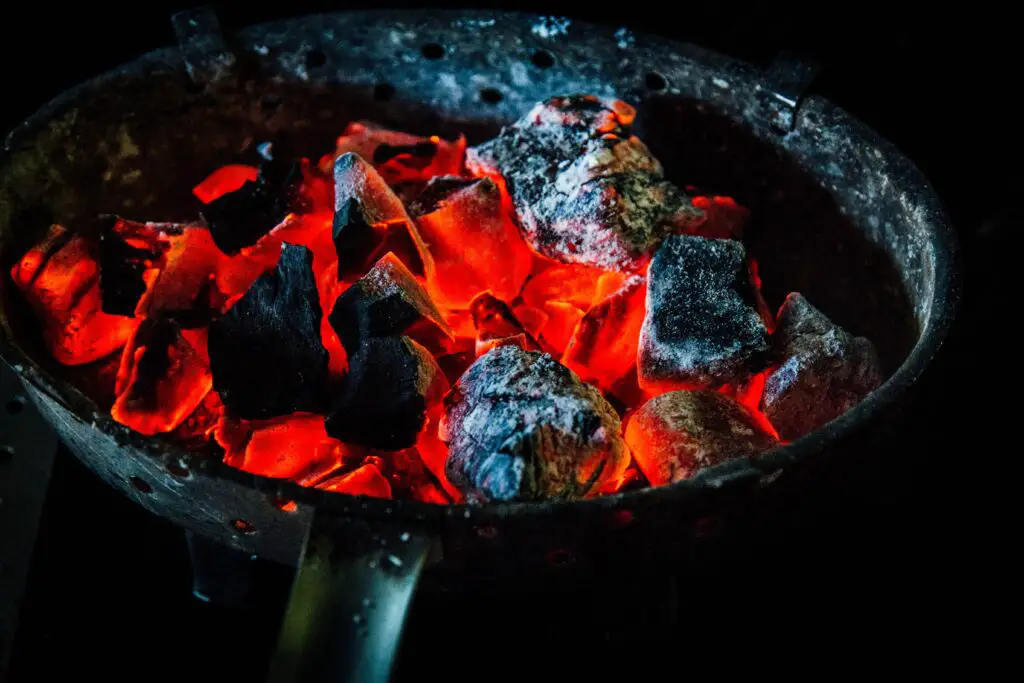
Step 5: Searing the Beef
Beef doneness is a bit controversial with Wagyu. Personally, I believe that cooking it all the way to well-done would strip it out of its texture. That’s why I like to sear it for a rare or a medium-rare finish.
To start, get the beef into the hot skillet by placing it over its seasoned side. Leave it to sear in that position for 3-4 minutes. While you’re waiting, sprinkle some salt and ground pepper over the top side. Then, flip it over and let it sear for another 3-4 minutes.
How to Know When It’s Done?
Master cooks know that timing your meat isn’t the ideal way to guarantee the perfect finish. Alternatively, you can use a meat thermometer to check the internal temperature. Ideally, it should be somewhere around 130 °F / (55 °C).
If you don’t have that, you can poke your meat with tongs to test how firm it feels. However, since you spent a considerable amount of money on an exquisite gourmet experience, you should probably take out the guesswork. Order a meat thermometer and use it for the first couple of times when you are cooking wagyu beef.
Step 6: Let It Rest
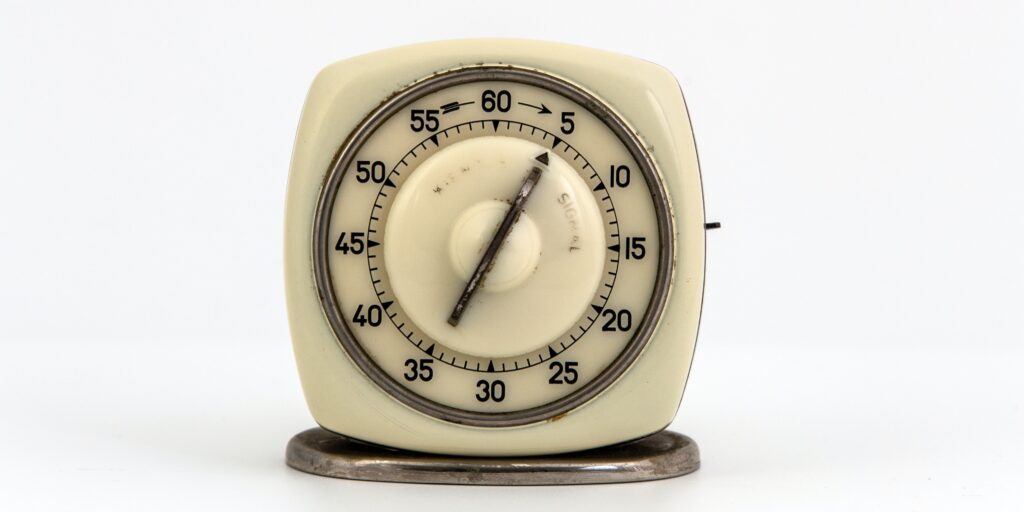
Yes, you read that right. Once you remove the Wagyu beef from the skillet, you should let it rest for 5-10 minutes before you can eat it.
Believe me, I’m not trying to torture you here. Letting the Wagyu sit after cooking should allow the fibers to relax and widen. As a result, they can reabsorb some of the juices that were sent to the surface by heat. If you begin insatiably eating it right away, most of that precious juices will be lost over your plate.
What to Serve It With?
To be honest, I’ve never wanted to put anything alongside my Wagyu beef. Its flavor is strong enough to make you forget about any garnishes. Nevertheless, since you’ll mostly share your Wagyu with friends and family, preparing some side plates would be appreciated.
For a light experience, consider adding leek and potato purée. These should provide a nice balance to how the meat tastes.
If you want to go for the full Japanese experience, pair your Wagyu with rice, wasabi, and lime wedges. That’s how the masters eat it!
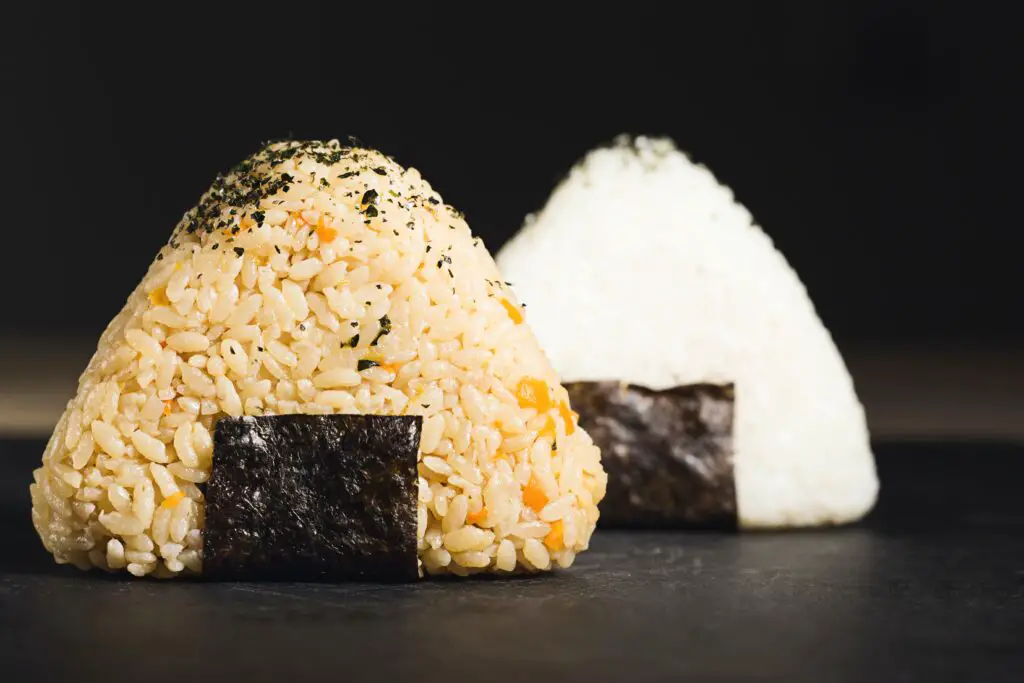
Where to Buy Wagyu Beef
Since Wagyu is pretty rare, you might not find it in your local store. In that case, you should give CrowdCow a try. They have a vast collection of beef from a bunch of different countries.
Their Kobe Wagyu A5 is undoubtedly the best beef you can ever taste. But because Japan doesn’t export that much meat per year, you might not always find it in stock.
The second best is Snake River Farms. Although their meat is crossbred Wagyu, it is a viable alternative at a lower pricepoint.
Final Thoughts
I hope this article helped you know how to cook Wagyu beef. Remember, you need to avoid exposing your frozen beef to the air to avoid freezer burns.
And don’t forget, you need to let your beef rest before you eat it. Otherwise, you’ll lose a lot of the tasty juices.

